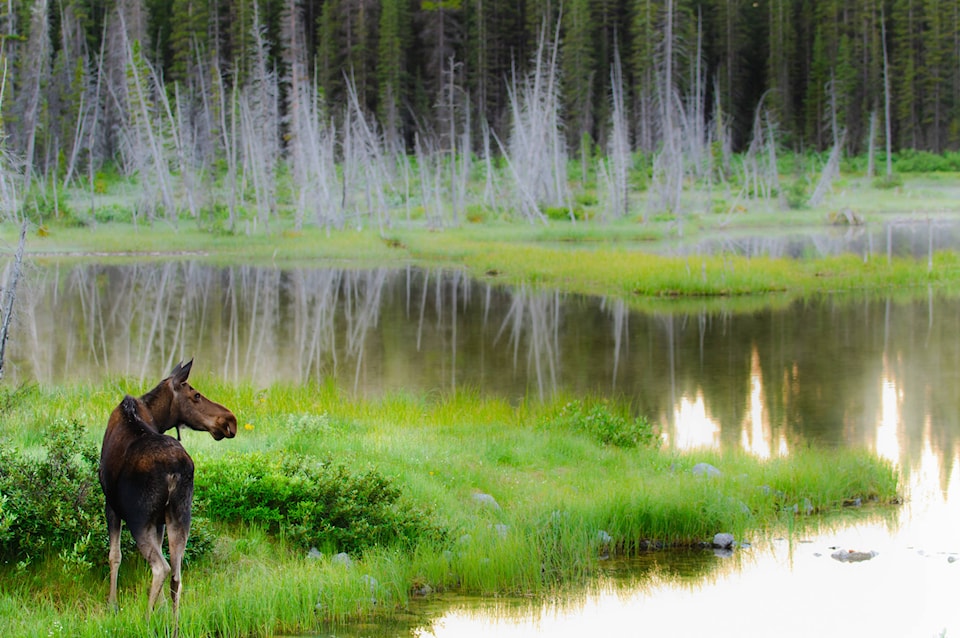A Smithers-based wildlife biologist has great hopes for a test project underway in a 720-hectare area east of the Babine Mountains to increase the moose population by providing an ongoing supply of forage.
Workers have partially cut through quantities of Scouler’s willow in a technique called hinging whereby saws are used to cut halfway through a tree trunk. The trunk is then pushed over to provide cover and forage.
Animals then have forage readily available and the technique also encourages stump and tree sprouting so as to provide an ongoing supply.
Len Vanderstar said the regional moose population has drastically declined in recent years from a combination of factors.
Climate change’s warmer winters means ticks affecting a young calf’s health aren’t being killed by prolonged cold periods and human predation has also taken its toll, he said.
Ticks by themselves can account for a loss of up to half of the population of calves, Vanderstar said.
“With ticks, they can lose just so much blood,” he added.
Also, an insect called a willow weevil has been affecting willows, a favourite forage of moose. Vehicles and trains continue to take their toll and there is a yearly moose hunt.
“When you add it all up together, it’s a perfect storm for moose decline,” said Vanderstar.
“From 2012 when there was an estimated 12,000 moose, the population in 2018 was 6,000 — so basically half.”
Vanderstar estimates the work will result in a four-fold increase in forage supply for up to 15 years, a factor he hopes will spur having similar projects undertaken in more areas.
“We’ve already had some great sprouting,” he said of early results. “The moose are there. Once we treated an area, they didn’t waste any time in going in there.”
The $107,847 project was financed by the Forest Enhancement Society of B.C. and the Habitat Conservation Trust through the Bulkley Valley Rod and Gun Club with Vanderstar as the project’s manager. Two guides whose area takes in the test acreage did the hinging.
A follow-up study will provide information and guidance for future work.
The contribution to the project from the Habitat Conservation Trust Foundation is part of $9.3 million spent this year on 175 projects, the largest annual amount it has ever committed.
Elsewhere in the region, the conservation trust and forest enhancement society are financing a $50,000 project to restore and replant whitebark pine, a species valued by bears.
That includes planting seedlings, preparing seeds for future plantings and monitoring three trial areas.
By itself, the heritage trust foundation is financing:
- A quality waters strategy for the Bulkley, Kispiox and Morice rivers to review what anglers target and to examine the feasibility of a lottery booking system. The project also includes stock assessment activities on the Skeena, Kitwanga, and Bulkley Rivers.
- Work to restore fish passages at road and rail crossings where structures may affect fish movement. This includes investigating culverts.
- A project involving approximately 73 kilometres of roads within the Whitesail Reach area to reduce access for both humans and predators of the Tweedsmuir-Entiako caribou herd. This will aid in the creation of 7,176 hectares of low elevation summer habitat from the shoreline of Whitesail Reach to no-harvest areas.
